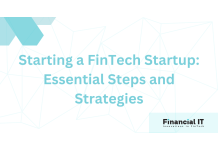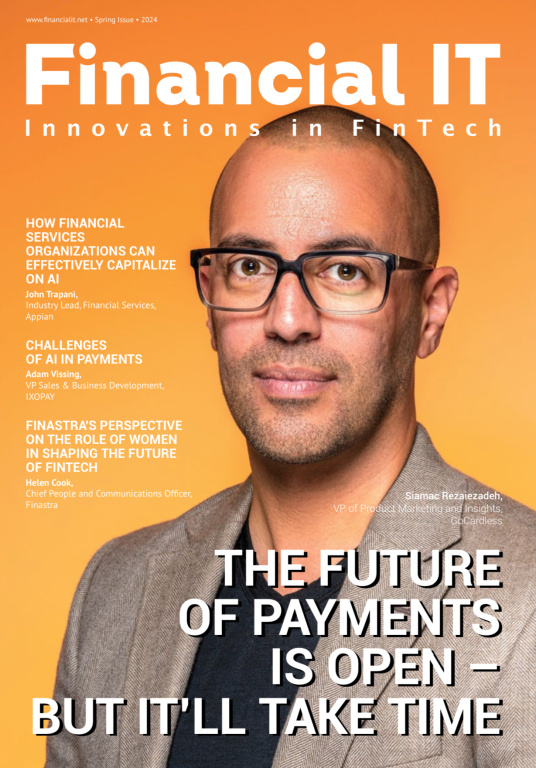AI-powered Mobile Banking is the Future

- Richard Timperlake, SVP Sales EMEA at Confluent
- 12.04.2024 01:15 pm #AI #banking #mobilebanking
Mobile banking has transformed the delivery of financial services over the past 25 years. The routine of visiting a bank branch to manage your money is long gone; with 86% of UK adults using some form of online banking. There are many young people today who have never stepped foot in a physical bank branch.
The rise of AI and machine learning in financial services, and the ability to command that intelligence from our electronics, are the obvious reasons for change. Many digital-only banks now offer innovative services like real-time budgeting tools and investment advice through their apps, as financial organisations scramble to bring newfound capabilities to their online customers.
The future of mobile banking is closer than we may think. But that future isn't just about offering services on a phone; it's about fundamentally changing how people manage their finances and doing so in a way that has empathy and customer-centricity at its core. Convenience has raised the stakes for consumers, who expect a smooth, personalised user experience.
All of this makes for a tough balancing act. How can AI be used to deliver a personalised consumer experience, without compromise, while maintaining the privacy and security that modern customers demand?
AI’s seamless approach to mobile banking
The short answer is that security does not come at the cost of a smooth experience or a personal feel. AI allows the systems quietly working behind the scenes to come into play, combining personal data and functionality to deliver automated, secure, personalised banking experiences.
Think about those subtle nudges a bank will give when you make an unusual purchase, or automatic notifications that remind users when a bill is due. Take two-factor authentication (2FA) as an example. When it was first introduced, 2FA felt clunky, but now it’s second nature, enabling banks to offer their customers both convenience and peace of mind.
AI can take such convenience a step further, analysing consumer behaviour to shape their services. For example, transactions can be automatically categorised into spending ‘pots’, or savings goals can be suggested based on a user’s spending habits.
This new approach understands that banking is about more than transactions. It’s also about providing a seamless, bespoke banking experience that gives customers control and confidence in their digital wallets.
Users given increased autonomy
Banks want to weave elements of personalisation into the customer experience and the services they provide, to instil trust in their users. However, that’s easier said than done.
With personal data becoming harder to access in light of Google’s move to phase out third-party cookies, this presents a challenge. Users are now smarter and more protective than ever when it comes to managing access to their personal data. They don’t want to give it to just any business – and they want to feel sure that they’re getting genuine value from the companies they use.
In adjusting to this new landscape, banks should rely on first-party data, in which users give a company permission to use their data. This ‘opt-in’ approach means that consumers make a conscious decision to share their personal data, keeping control over what a business knows about them.
In earning this level of trust by giving consumers a choice over what to share, mobile banking can seamlessly adapt to each user without compromising the level of data sharing an individual is comfortable with.
Inclusivity at the forefront
It’s clear that mobile banking is capable of managing day-to-day transactions, and there’s not a lot that it can’t do. If anything, it makes what’s left of in-person services even more valuable.
There are still personal matters like making complex financial decisions around loans or investments that will demand a human element. That’s not only to tailor experiences on a case-by-case basis but to instil trust; we’ll inherently trust humans more than machines. It may be, for example, that those with limited digital literacy or internet access will require face-to-face consultations.
The opportunity to build trust with a banker through this form of human connection is invaluable to long-term financial planning. With customers valuing convenience in both online and offline encounters, the existence of bank branches is still necessary for financial inclusion.
The future of banking
Mobile banking today goes beyond just offering services on a phone. Rather, it seeks to fundamentally change how people manage their finances, placing customers at the centre of the experience, and using their data to understand them as unique individuals.
By maximising the value of the data shared by each customer through AI, banks can identify and deliver the most suitable products and services for them.
With the flexible use of data, each customer experience can be personalised and changed in real time – whether online or offline.
This will create empowering experiences delivered by AI and machine learning, making users’ financial lives smoother and more secure.





















